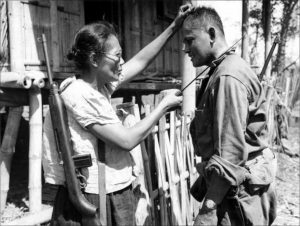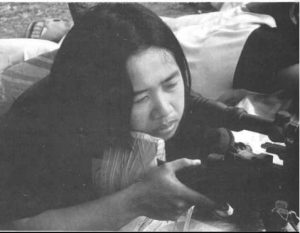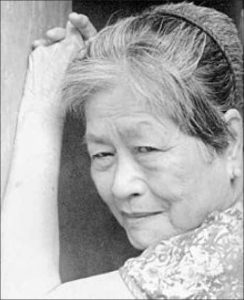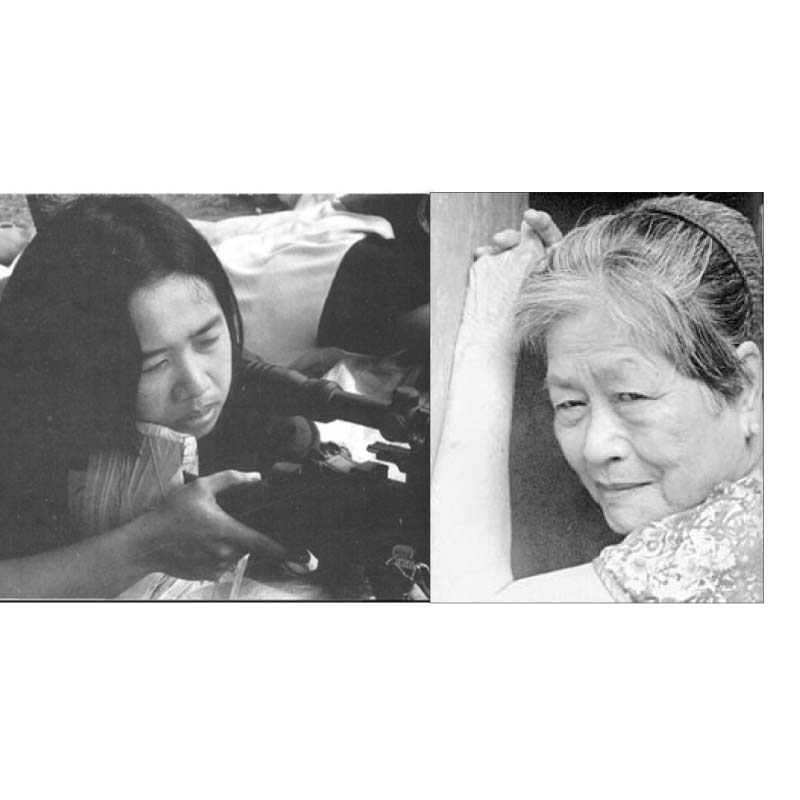
In preparing this issue of Tulay, our research team found this interesting website aptly called FilipiKnow, where the full story of the 13 Filipinas can be accessed on the website.
Nazaria Lagos (1851-1945): Lagos served as the first president of Iloilo’s Red Cross in 1897. She and her husband, Segundo, offered their home to become a secret meeting place of Filipino revolutionaries. She, along with her four daughters, are locally known for handmaking the Philippine flag raised in Dueñas town plaza during the first year anniversary of the declaration of Philippine Independence.
Nieves Fernandez (1906-?): Fernandez was a female guerrilla leader during World War II. Once, she led 110 men and women and killed more than 200 Japanese using only knives and improvised shotguns (paltiks) made from gas pipes. She was so good that the Japanese placed a P10,000 bounty on her head.
Agueda Esteban (1868-1944): Esteban was a key person in supplying ammunition to Katipuneros in Montalban, Marikina, Manila and Cavite. She and her husband, a Katipunero, worked as couriers for Gen. Artemio Ricarte during the Filipino-American War.
Marina Dizon (1875-1950): Dizon was a Katipunero and presided over recruitments and initiation rites, especially for women recruits. She told them to “be cheerful at all times, do not show signs of any impending rebellion. Be prepared to be orphans and widows. Be brave and carry on.”

Maria Lorena Barros (1948-1976): Barros graduated magna cum laude in A.B. Anthropology at the University of the Philippines, Diliman. She was an activist during martial law and one of the student-leaders during the First Quarter Storm in 1970.
She co-founded Malayang Kilusan ng Bagong Kababaihan (MAKIBAKA) which focused on addressing women’s issues in a semi-feudal, semi-colonial and patriarchal Philippine society. In 1973, she was pregnant with her second child and was heavily tortured by the military, which caused a miscarriage. She escaped prison and led the revolutionary activities in Quezon province. Barros has become a symbol of the women’s movement and the student activity center in UP Diliman was named in her honor.
Simeona Punsalan-Tapang (1923-2015): Tapang was a guerrilla leader who fought the Japanese imperial forces in Luzon. She was known as “Kumander Guerrero” to her subordinates in Apalit Squadron 104 in Hukbong Mapagpalaya ng Bayan.
Marcela Marcelo (1869-1897): Marcelo, also known as Selang Bagsik and Henerala Sela, was a fierce fighter during the revolution. Carlos Ronquillo, Emilio Aguinaldo’s private secretary, described her as “a middle-aged married woman who had a child… always in the head of the battle with no weapons but a bolo.”
Liliosa Hilao (1950-1973): Hilao was the very first reported martyr of Martial Law back in 1973. She was a student-leader and a member of Samahang Demokratiko ng Kabataan. Health issues made attending rallies and demonstrations difficult. But she made up for that by writing in Hasik, student-run newsletter of Pamantasan ng Lungsod ng Maynila, to criticize government’s human rights abuses. In 1973, she was tortured and killed by the Constabulary, who made her death appear as a suicide.

Maria Rosa Luna Henson (1927-1997): Henson was the first Filipina who voiced her story as a comfort woman for the Imperial Japanese Army during the World War II. A member of Hukbalahap, she was forced to become a comfort woman after she was caught by Japanese soldiers in 1943. In 1992, Lola Rosa wrote about her experience in the book, Comfort Woman: A Slave of Destiny, which led other comfort women to speak up with their own stories, including those from Korea and China. They joined together to file a class action lawsuit against the Japanese government in 1993.
Salud Algabre (1894-?): Algabre was the only female member of the Sakdal, a peasant rebel movement which fought for independence from the United States and genuine agrarian reform. She was also one of the leaders of the Sakdal Uprising on May 2-3, 1935 in Bulacan, Cavite and Laguna.
Gliceria Villavicencio (1852-1929): Villavicencio is one of the patrons of the Philippine revolution. She donated the SS Bulusan, the first warship of the revolutionaries, which was used to transport Filipino solders, ammunition and food supplies.
Remedios Paraiso-Gomez (1919-2014): Gomez was one of the highest ranking female commanders in Hukbalahap and known as Commander Liwayway. She led Huk troops into battle wearing bright red lipstick and dressed up as if going to a social function. She did this to inspire her troops by making herself look calm and composed even before a fight. She also said she “is fighting for the right to be myself.”
Josefina Guerrero (1918-1996): Guerrero, afflicted with leprosy in 1943, used her illness to spy on Japanese forces. She could easily cross enemy lines without question because Japanese soldiers usually avoided her. She worked as courier, and she traveled 75 miles to the American outpost to deliver a map detailing the Japanese land mine placements. This act of courage saved the lives of hundred of soldiers.





